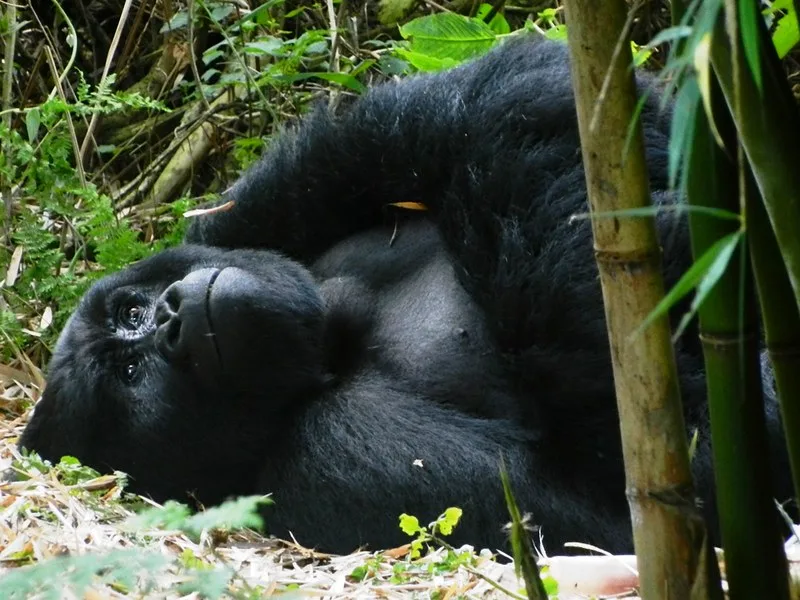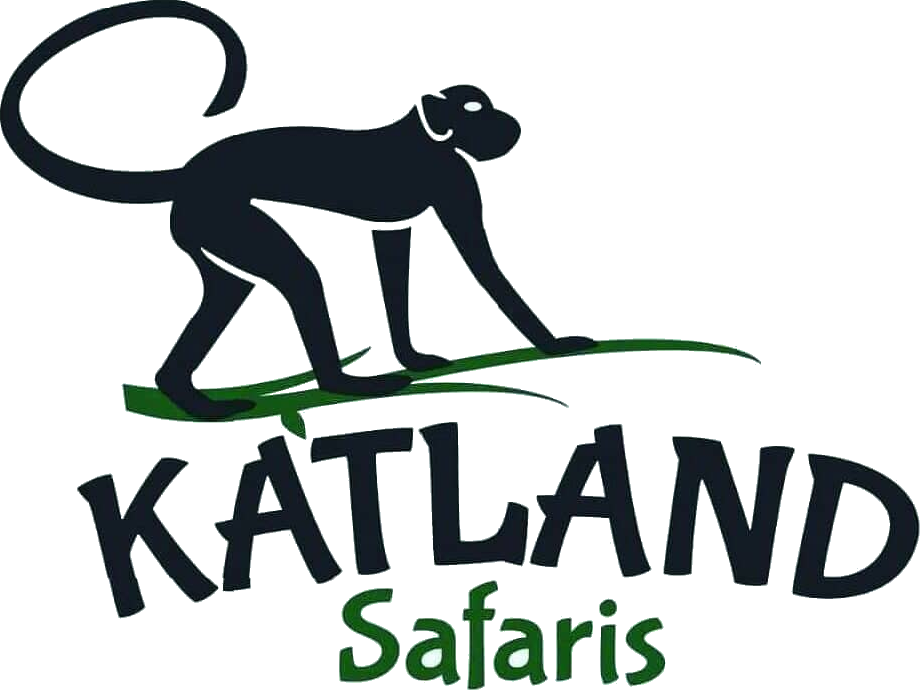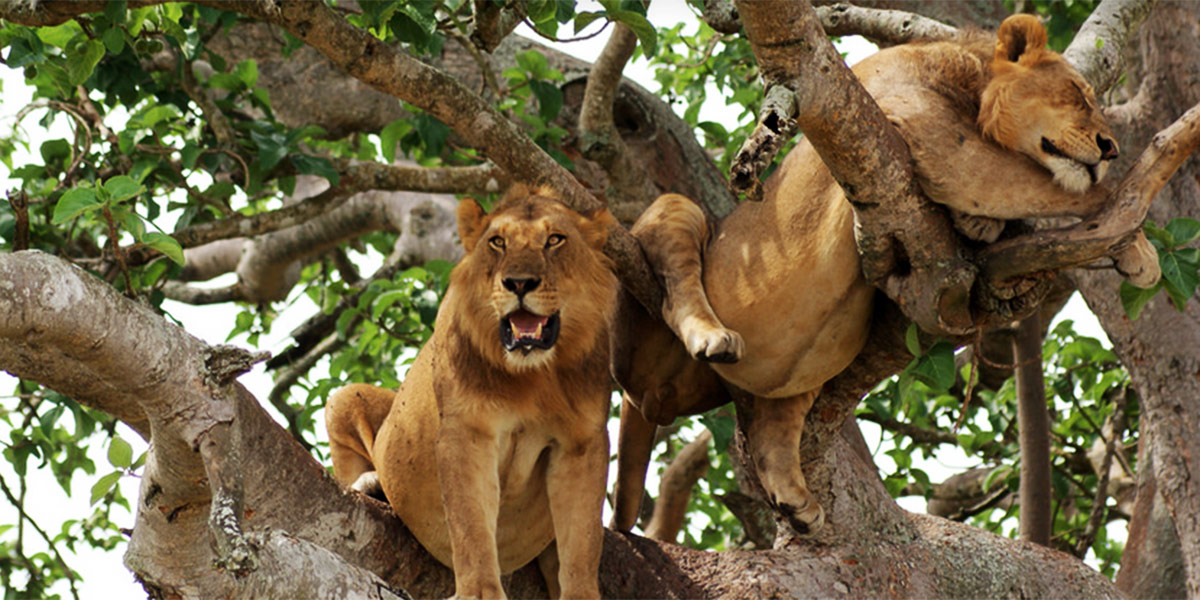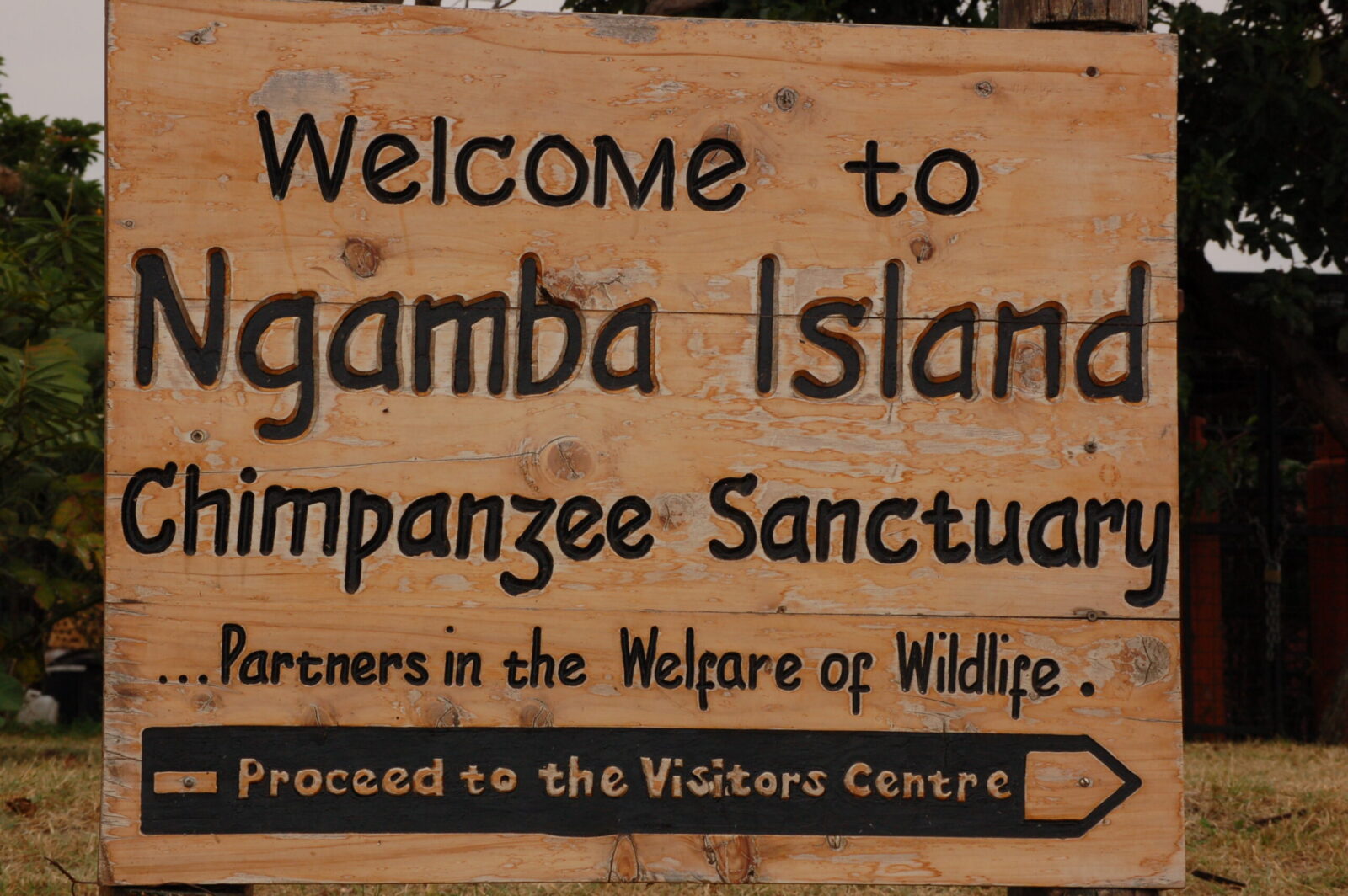A Guide To Gorilla Trekking in Mgahinga National Park, Uganda.
One of the Uganda safaris, gorilla trekking in Mgahinga offers the closest anybody may go to a habituated mountain gorilla family in a natural surroundings. One of those travel experiences every visitor should cross off their list is climbing the Mgahinga National Park volcanic slopes in search of the mountain gorillas and spending one focused, continuous hour with the gorillas in the bamboo forest. The ratings for this excursion are increasing, and every year the logistics to get there are becoming easier.
Protecting Uganda’s part of the Virunga Volcanoes, Mgahinga National Park is at the extreme southwest border of the country with Rwanda and DRC. From 2,227 to 4,157 m (7,306 to 13,540 ft), the 33.9km2 (13.1 sq mi) wraps around Mount Muhabura, Mount Gahinga, and Mount Sabyinyo three extinct volcanoes.
Mgahinga, among Africa’s best gorilla trekking sites, safeguards an amazing range of unusual plant and animal species in its bamboo, montane, moorlands, and alpine forests at higher elevations. But the endangered mountain gorillas and golden monkeys native to the Albertine Rift area are most honored residents.
Mount Gorillas in Mgahinga
About half of the mountain gorilla population wanders between DRC’s Virunga National Park and Mgahinga, Volcanoes National Park in Rwanda. While many of them hide and keep far from human reach, some gorillas have become acclimated for human encounters. One habituated mountain gorilla group accessible for hiking in Mgahinga National Park is Nyakagezi.
There are about ten members of Nyakagezi Gorilla Group, three silverback males, but only one silverback, Mark, rules the group. Mark is rather daring; in his early years, he would move the group over the border into DRC, Rwanda, and back to Mgahinga. He has lately stayed within Mgahinga limits and followed the lifestyle of the family.
Mgahinga grants just eight permits daily to anybody over 15 years to hike and spend one hour with the habituated gorilla population. From Uganda Wildlife Authority offices or via a licensed local operator such as Katland Safaris, the gorilla permit for Mgahinga costs USD 800 per person per trip.
Mgahinga Gorilla Trekking: What To Expect
Following a brief instruction at the gate of the park, gorilla trekking in Mgahinga begins early morning at around 08:00. At the briefing point, a warden will examine if you contain any contagious illnesses: gorillas share 98% of our DNA and are vulnerable to human diseases. So make sure you’re not sick and 72 hours before the trip test for Covid-19.
The warden will then walk you through the guidelines, how you should behave and manage yourself while walking, and while spending your one hour with the gorillas. They will ask you to remain with the trekking group at all times, refrain from polluting the park, wear a facemask while among gorillas, assign you armed rangers for your protection against the unexpected.
Following the briefing, your small party of not more than eight visitors, two rangers, a lead tracker guide with a walkie-talkie, and a few porters to help some trekkers will go into the mountain forest following the tracks of the lead tracker. How long the journey over many forest zones to reach the mountain gorillas may take is not precisely known. Still, depending on the activities of the gorilla troop, most hikers spend 45 minutes to 4 hours.
Like their name implies, the mountain gorillas reside on somewhat steep mountain slopes. For armchair visitors, the walking path to the gorillas in Mgahinga is erratic and very demanding. Still, most travelers on uneven paths will find gorilla trekking in Mgahinga not that difficult. But we advise you to find out your physical health a few weeks before you visit; otherwise, you never know how far you would have to go to locate the gorillas.
Your tracker will make sure the speed of your hiking is the slowest among the slowest trekkers, providing little pauses to collect your breath and sip water. To keep you interested, they will also be feeding you knowledge about the forest and its inhabitants.
When you locate the gorillas, the rangers and guide will select for you a suitable spot to interact with them. Usually, the mountain gorillas will overlook your presence with only faint glances at you. Little ones sometimes will be fascinated by what you’re wearing and want to touch. Your guide will advise you, nevertheless, to remain a safe 10-meter distance from them and prevent any touch. You will record your memories and enjoy every minute around the unconcerned silverback and his family for the following hour.
Your guide will gently walk you away from the gorillas and out of the forest when the hour is running out, without upsetting the animals. They will discover a fitting opening where you may have your packed lunch, regain your breath, and remember your adventure before returning to the headquarters. The warden at Magahinga National Park headquarters will provide you a certificate of accomplishment to thank you for helping to save gorillas.
Following gorilla trekking
An energetic explorer might find many more things interesting after gorilla trekking at Mgahinga: birding, climbing up one of the volcanoes, seeing the Batwa tribe, or tracking the endangered golden monkey.
Following golden monkeys is the second most popular pastime in Mgahinga, after gorilla trekking. Only the Virunga area has the threatened golden monkeys; Mgahinga National Park is the only place one may observe them. Available for daily half-hour and full-day treking trips, a group of more than thirty people has been habituated for trekking.
Climbing one of the three moderate mountain climbing peaks of Mount Muhabura 4,157 m, Mount Gahinga 3,484 m, and Mount Sabyinyo 3,669 m many visitors come to Mgahinga National Park. From the Mgahinga park headquarters, daily walks lead one to see the most breathtaking vistas in central Africa from the sky.
Following gorilla trekking at Mgahinga, it is not unusual for guests to spend the remainder of the day seeing the local Batwa tribe living on the edge of the park. Originally living in the mountain woods, the Batwa were moved to make room for the conservation efforts of the park. Sharing the same environment with the gorillas and other mountain wildlife, they will highlight their old primal traditions. For only twenty dollars, you may dance to their catchy songs, listen to their stories, stroll through their towns and woodland paths.
Mgahinga is among Uganda’s most sought-after birding locations; over 180 different species have been reported there. Some birding enthusiasts may hike gorillas in the park and follow the rewarding birding paths to optimize their trip to Mgahinga. Among the most beautiful paths to see certain uncommon species are the gorge between Gahinga and Sabinyo, over the bamboo forest, and in the montane forest.
How To Approach There
About 500 km (317 mi) southwest of Kampala, Mgahinga National Park would be reachable via a 10-hour trip via Kisoro. From the closest city, Kisoro, you will travel almost an hour on a 14 kilometer difficult climb road to Mgahinga. You have to negotiate this route with a 4x 4 automobile, particularly in February through May and September through November when it is wet.
From Queen Elizabeth National Park, Ishasha leads you past Bwindi Impenetrable Forest and on route towards Mgahinga. Usually, the journey takes six to seven hours. Also from Kisoro, Lake Mburo National Park.
About 46km/29mi from Kampala, Entebbe International Airport (EBB) allows one to take a one-hour domestic flight from Entebbe to Kisoro Airport.
Where Should You Remain?
Mgahinga finds few places for lodging close to the park. Its proximity to Kisoro town and Lake Bunyonyi, however, benefits the visitor to stay at either one of the two adventure sites (an hour away) and be on time for gorilla treking at Ntebeko trailhead.
Only two lodging options just outside Mgahinga are the high-end Volcanoes Mount Gahinga Safari Lodge and Amajambere Iwacu Camp (shoestring).
Two mid-range outstanding lodging choices at Lake Bunyonyi are Birdnest at Bunyonyi Resort and Bunyonyi Overland Resort. Still, our specialists may provide many reasonably priced choices for you at your request.
Though there are numerous cheap to premium city hotels in Kisoro Town, our choice comprises only:
Hotel Kisoro for Travelers
Rest Hotel of Kisoro Travelers: Countryside Guesthouse The Mountain Gorilla Safari Hotel Kisoro
The decisions might overwhelm you, but that shouldn’t be the case with our specialists’ guidance. For a brief suggestion, contact us.
Though the optimum time to visit is during the dry seasons from June to August and December to January, Gorilla Trekking in Mgahinga National Park is available the entire year.
The forest pathways are more easily accessible for trekking during the dry seasons, hence you have higher chance of avoiding rain falling on you during a priceless hour with the gorillas.
The busiest months in Mgahinga and Uganda are June through September. Gorilla permits are rare at this time; thus, we encourage you to reserve yours early on.
The worst of the seasons is the rainy ones, March through May and September through November. Walking the woodland paths might be difficult for many since the rains are pouring torrentially at this moment. While many visitors greatly avoid the rainy season, gorilla trekking in Mgahinga is available, and some benefit from the low-season prices.
Mgahinga Gorilla Trekking Safaris and Encounters Mgahinga has gorilla trekking safaris run by local travel firm Africa Safaris. Our itineraries are tailored for guests to include lodging, food, transportation, and booking of your gorilla permits. Through emails and calls, we arrange the safari with you such that we can record your close expectation and enable you to travel worry-free so that you may spend time enjoying your trekking trip in Uganda.
Tell us your choices by sending an email. One consultant will be assigned to control your expectations within your allocated budget.


